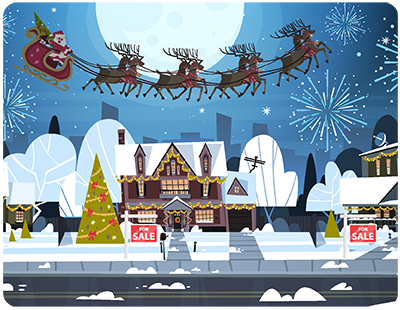How has your company had to adapt to the Covid-19 pandemic?
During the pandemic, my business partner and I took the decision to fully underwrite the returns across our entire portfolio - amounting to over £250 million worth of London real estate at that time - despite occupancy and rental values being temporarily, but significantly, depressed. This move was expensive and painful at the time, but it won, and continues to win, us added goodwill and credibility with our landlords, suppliers and stakeholders.
As the UK began to emerge from the measures imposed, we significantly adapted our broader business strategy and began acquiring key competitors. With multiple acquisitions now completed, and several in the pipeline, this move has enabled us to get back on track with our growth plans, despite stunted growth rates for 2020 and most of 2021.
What are your predictions for the co-living/house-share market in 2022?
As normality resumes post-pandemic, there is a rebalancing of supply and demand within the co-living market, and we expect to see demand holding firm and potentially increasing throughout 2022.
Attention has now turned to the cost-of-living crisis. Co-living and houseshare providers tend to include bills within their service offering, so providers will see their costs escalate aggressively in 2022 with a 50% hike in gas and electricity prices already in place from April, and further increases being predicted for October.
A challenge for providers will lie in effectively communicating these increased costs of provision to tenants to avoid friction with customers. Of course, this problem affects regular tenants as much as co-living tenants, but because bills are payable separately under regular rental agreements, co-living providers will be faced with the challenge of headline rents appearing to escalate more quickly and seeming comparatively more expensive than regular single let agreements.
Some say Build to Rent and co-living are two sides of the same coin – do you agree?
Not necessarily. Co-living can take various forms including, for example, a group of four to six unrelated people living cohesively in an existing residual unit while having access to broader community benefits. This said, there are huge synergies between Built to Rent and co-living. The marriage of the two enables investors and developers to maximise their returns per square foot within a scheme, while creating optimal layouts and facilities for renters. I also think the combination of Build to Rent and co-living will accelerate co-living real estate towards institutional grade asset status.
What is your greatest achievement in your current role and what made it so special?
The fact that we boot-strapped the business with no external investment and scaled it organically to a position whereby it underwrites over £300 million worth of London real estate and has housed over 5,000 professionals.
The key things that make this so special for me are the fact that the business is having a reasonably significant impact in what I deem to be one of the most exciting markets in the world, and the level of work that has gone into building it. The coordinated, sustained effort from a group of people who are continually learning and evolving, has led to some of the greatest feelings of satisfaction when goals are met.
What is the most satisfying part of your job?
It’s incredibly difficult to pick one thing because our roles as founders and directors are hugely broad and varied. However, I would say that seeing our senior team members develop into highly competent leaders, capable of taking the business through the next part of its journey, really stands out to me as satisfying.
What do you see as the biggest challenge facing the co-living sector?
I think the biggest challenges facing the co-living sector mirror those facing the broader private rental sector (PRS). Continual legislative changes with a lack of uniformity, in combination with changing and increasingly punitive fiscal measures, make it increasingly difficult for landlords and businesses to strategise and plan.
It’s very important that, in the coming months and years, the government works with the private sector to create sustainable and effective frameworks that improve the safety and standards of residential accommodation. Too often in the last five or so years we have seen ill thought-out changes being brought in, which have often created the opposite of their intended consequences and negatively affected tenants, landlords and providers alike
The great financial raid and ever-moving set of goal posts on individual PRS landlords over the last five years, for example, has caused many to pull out of the market altogether. The result of this is a significant lack of rental stock in much of the country which has inadvertently created significantly inflated rental costs for tenants. It’s important that, ongoing, the market is a desirable place to be for landlords who are adhering to best practice and providing a much-needed service.
What is your property prediction for 2022?
The growth of the Build to Rent sector and the jostling for position amongst the key operators is likely to be a continuing theme for 2022, particularly in London and other major UK cities. The operator sector in the US is much more mature and I believe that, to a certain extent, the UK market will follow.
In the more traditional market, I would like to see an increase in rental stock, of all sizes and layouts, across the UK so that rental prices normalise, particularly in the larger property space.
From a property sales standpoint, it’s a very interesting time. Geopolitical uncertainty and talk of accelerated interest rate hikes could put some downward pressure on property values However, the Bank of England is considering relaxing mortgage affordability tests, which would improve access and likely exert notable upward pressure on values, more than compensating for the uncertainty. I will watch with interest!
-------------------------------------------------------------------------
Country house or city apartment?
Country house
Trendy roof terrace or traditional English garden?
Traditional English garden
Would you rather be a free-moving tenant or settled owner-occupier?
This is a topical question for me. For the first eight years of our business journey, I favoured being a free-moving tenant and investing in buy to let properties, however I am currently making plans to move to owner-occupier status for my main residence.
What is your favourite room in your home?
The lounge. For me it’s the heart of the house and provides a setting for everything from an occasional main office during the day, to a space to relax and unwind in the evening. The layout of my house is broken plan living onto kitchen so I can also smell the culinary skills of my fairer half, which is important as my own are non-existent!
Homes under the Hammer or Location, Location, Location?
I don’t know if I should be proud or embarrassed to disclose that I don’t actually watch either. However, I did inadvertently become engrossed with the Australian version of MasterChef during a recent trip East, so it’s not all Shakespeare and textbooks of an evening in my house.





.jpg)






%20-%20IMAGE%20Client%20Accounting%20%E2%80%93%20what%20are%20your%20options.jpg)








Join the conversation
Be the first to comment (please use the comment box below)
Please login to comment